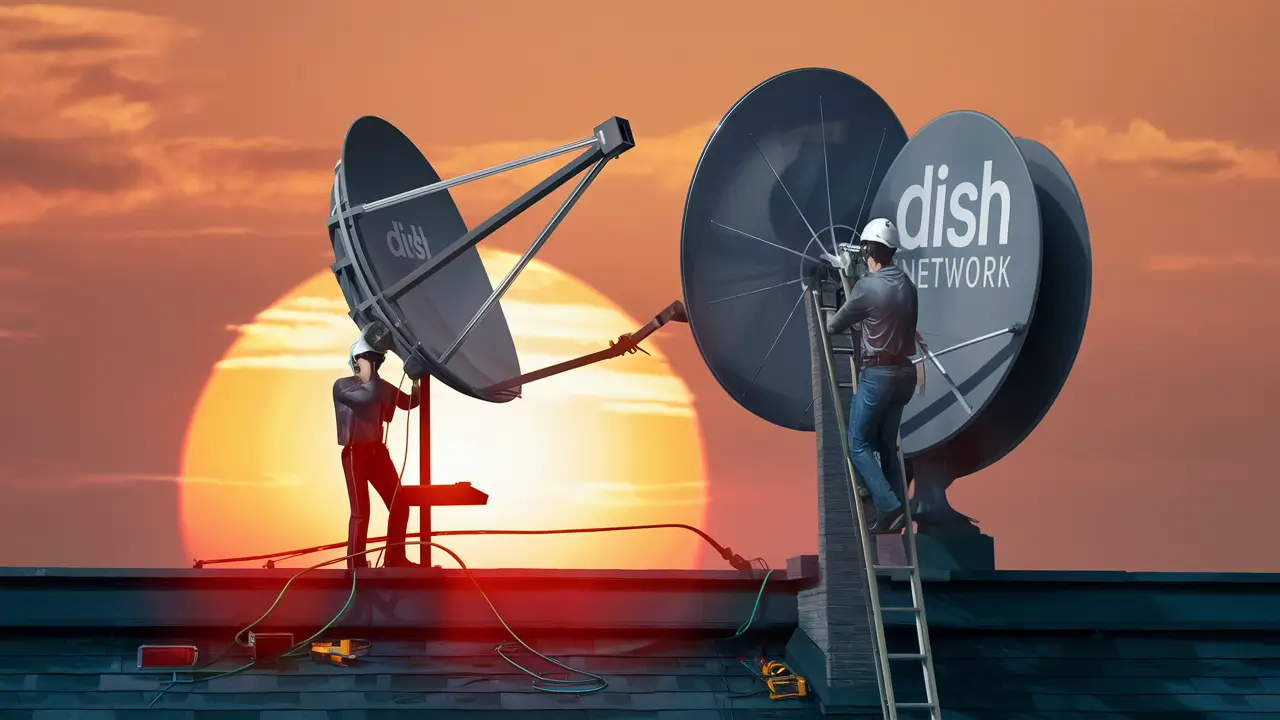
The following are the benefits that are associated with a home satellite TV system You can get hundreds of channels in your home via a satellite system with programs that may not be aired on cable television. Proper installation of a satellite dish means that you are assured of the best signal to enjoy your TV programs. Below are the procedures of how to install a DISH NETWORK satellite system at your home:
Choose a Location
Before you begin, it’s important that you choose a good spot to mount your dish. The satellite dish has to be positioned in a manner that it can face the southern sky where the Dish satellites are found. Ensure that there are no barriers such as trees, buildings, hills, or poles, which may interfere with the signal transmission.
The best place to install them is on your rooftop or on the sides of your house. Select a place that has a good signal strength and should not fluctuate. The dish can be put on the ground but has to be placed on a cement floor or any other hard surface as it may get disturbed. Terrace and backyards are also preferred locations for placement of a side of a balcony.
Cable Connections: Connect a Cable to the Receiver Location
When deciding where to install the dish, decide where the satellite receiver will be located within the home and pull the required cables to the location of the dish outside. To connect your dish to the satellite receiver, it is advised to use RG6 coaxial cable.
Ensure that the cable used is of sufficient length to allow easy connection between the satellite dish location and the receiver. Be sure to leave some extra slack as well to avoid issues with pulling wires tight later on. Ensure tidy and safe cable runs through proper installation of the cabling against the walls or posts. Another secure method is the placement of cables in underground enclosures for outside cables and conduits.
Install Mounting Equipment
To maintain the correct orientation of your dish, it has to be mounted firmly and securely. There are several types of mounting equipment such as masts, brackets, and stands through which dishes can be mounted on various surfaces. Professional installation entails safely fixing the dish on the roof.
In do-it-yourself installations, the most frequently used configurations are the pole mounts that are free-standing on the ground or brackets for side wall mounting of homes. Read the guidelines of how to install the mounting equipment safely and correctly to support the satellite dish. Lag bolts are used for wood walls while brick walls require masonry anchors.
Assemble Satellite Dish
The satellite dish is made up of several parts which should be arranged in the right manner using the provided hardware and following the instructions given. Position the dish and screw it tightly so that minor changes can be made in future in order to get the right position. It is important not to overtighten bolts during the setup process since this may hinder the overall process.
Modern Dish satellite dishes are approximately 24 inches in diameter. The dish shape focuses satellite signals from the sky down into a low noise block (LNB) arm assembly mounted on arms in front of the dish. Coaxial cable passes from the LNB through to your house.
Point and Adjust Dish
When the dish is completely built and set up it needs to be aimed. The angle of inclination and rotation which is skew should be adjusted for an optimal signal since satellites are located south of almost all Dish customers. Many of the mounting hardware have provision for adjustment in all angles.
Using a good quality satellite finder will assist you in pointing your dish in the right direction. It captures signals through satellites that cannot be seen by the naked eye and will beep once you have properly aligned with the Dish satellites. Gradually turn the azimuth (horizontal) and elevation (vertical) dials on the finder while observing the meter and looking at the arrow until you obtain this steady tone.
You can also make further adjustments with the help of the signal strength meter that is displayed on your TV screen via the satellite receiver. Adjust the dish position, or the angle at which it is tilted, to obtain the maximum signal power. Just be careful not to over tighten any bolts when adjusting so moving the dish remains easy
Connect Your Receiver
With the dish properly placed, plug the coaxial cable from the LNB arm to the satellite receiver within your house. The receiver can then be activated with a subscription and tuned to the Dish programming beamed from the aligned satellite dish outside. Tune a television set to the receiver, search for channels and voila! you now have a new satellite TV service.
Routine Maintenance
To ensure your dish has maintained good positioning and all wiring and mounting have not been interfered with, it is advisable to conduct periodical inspections. The dish and mounting equipment are built to stand various weather conditions but storms can bring damage and hence interrupt service. Extreme weather conditions might require removal of the snow or ice that accumulates on the dish. An overgrown tree is also a signal interference which is worthy to be solved if the problems are observed. Here are some tips that every Dish satellite system subscriber should consider when it comes to site selection, mounting, and positioning of the satellite dish:
Ready to upgrade your TV experience? Call us now at (877) 471-4808 to find the perfect Dish Network plan for you! Don’t miss out on great entertainment—our team is here to help you choose the best package and get you started today.





